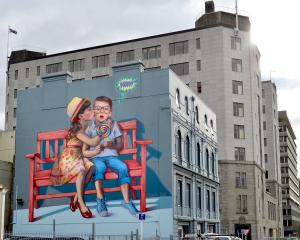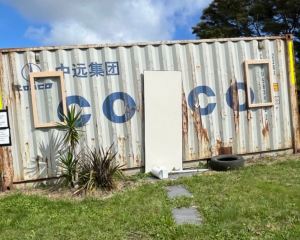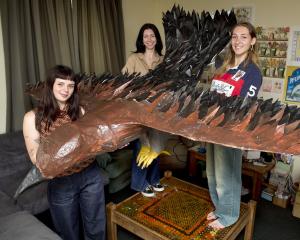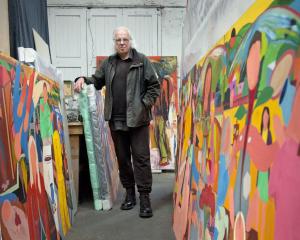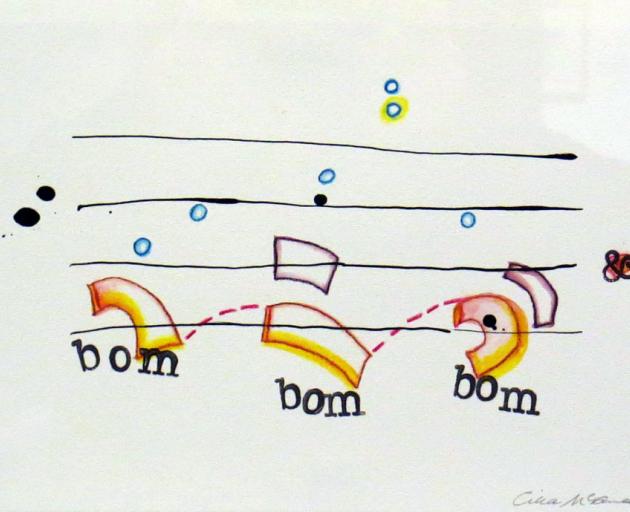
''What Happens'', Cilla McQueen (Brett McDowell Gallery)
It has been many years since Dunedin has been graced by an exhibition by Cilla McQueen and it is a welcome surprise that - like the proverbial bus - after such a long wait, two have come along at once. While ''Picture/Poem'' at the Hocken focuses on the artistic and creative relationship between McQueen and the late Joanna Paul, ''What Happens'', at the Brett McDowell Gallery, is a purely solo exhibition of McQueen's ink and watercolour works.
Perhaps more well known as a poet than as a painter, it is no surprise that McQueen's art is cross-modal, interpreting one creative impulse in the form of another.
In the 11 works in the exhibition, the artist presents a series of musical staves, each employing McQueen's own synaesthetic language to present snatches of music.
Melody lines twist and spiral along the scores, the wavering coloured outlines becoming musical landscapes, arcane ogham-like alphabets, or tumbled collisions of alphanumeric noise.
The resulting musical directions transcend their sonic purpose to become visual metaphors for sound.
Employing minimal colour and a personal creative language, the pieces become separate from any musical origins to float free and become artistic works in their own right.

Paintings and Photographs, Inge Doesburg (The Artist's Room)
An Inge Doesburg exhibition is always worth a visit.
Doesburg is a master printmaker, painter and photographer, and her work is both loved and influential among Dunedin artists, many of whom look up to her work.
Her current exhibition at The Artist's Room crams in a large number of paintings and photographs that, unsurprisingly, match up to the high standards for which her art is known.
The first room of the exhibition is filled with Doesburg paintings, landscapes and skyscapes of Otago painted in the artist's trademark warm earth tones.
A rich blue, unusually, dominates several of the works, but it is the chiaroscuro depths of Untitled, Akaroa Valley and Blackhead Beach that most capture the imagination.
The gallery's second room, with its concentration on photographs, also has this play of dark and light as a major feature.
This is most strongly evident in the haunting impressionistic haze of the artist's muted Chatham Island images.
These low-key works are offset by splashes of strong, fiery colour in a series of deliberately blurred still lifes of fruit, roses and dahlias.
The warm antique glow of rain-drenched flowers and fading posies completes the exhibition, the latter works oddly reminiscent of the work of the late Ben Webb.
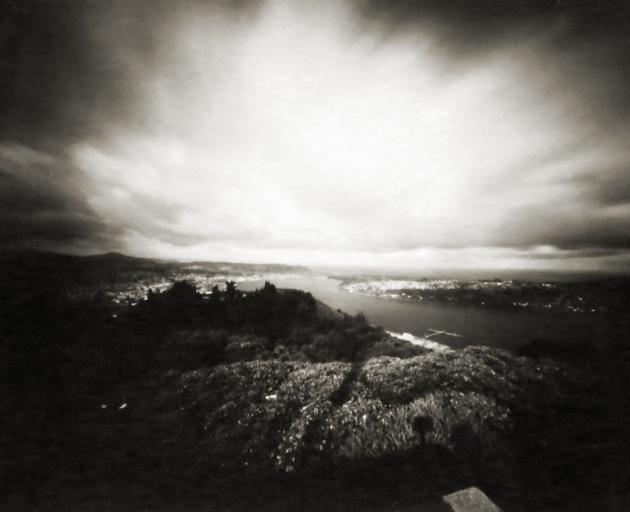
''Strangely Familiar'', Ryan McCauley (Mint Gallery)
Low-key photographs are also to the fore in Ryan McCauley's exhibition at Mint. McCauley uses perhaps the oldest form of camera science, the pinhole camera, in his work.
In this method, light passes through a tiny hole and resolves upon a flat surface - in this case, inside a home-made box camera fitted with photographic ''direct positive'' paper.
By eschewing the use of a negative, each work becomes a one-off and with no viewfinder, and purely manual control, there is always an element of chance in the works.
The pictures display the slight blurring caused by the long exposures (typically 30 to 300 seconds), and the strong distortions of wide-angle panoramas.
The images have other distinct characteristics, with their dark vignetting as the light tapers off at the corners, and the mirror-imaging of the landscapes displayed.
Understandably, the works have an antique air.
The familiar views of our city and its environs take on a disconcerting aspect with their mirrored and distorted images.
This is, in part, the artist's aim: not only to present these startling and beautiful views, but also to make us think about the buildings and land that we pass every day without being fully aware of it. In this, he succeeds excellently.






